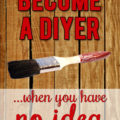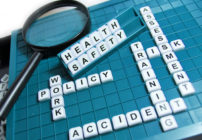So, you just bought a used car that was advertised as being in “good condition.” But what exactly does that mean? In the world of used cars, “good condition” can be a bit of a mixed bag. It generally means the car is in working order, but some repairs are still necessary to maintain that status.
This is particularly common when purchasing cars that were previously part of a business fleet. These vehicles are typically well-maintained but far from pristine. Now that you have the car, here are the top emergency repairs you may need to address to keep it running smoothly.
1. Chipped Windshield
A chipped windshield might not seem like a big deal at first glance, but it’s a repair you should prioritize. Small chips can quickly turn into large cracks, especially if the car is exposed to temperature changes or vibrations. If left unchecked, you may find yourself having to plan for a whole windshield replacement, which can be costly. The good news is that small chips can often be repaired at a fraction of the cost, but only if addressed early. So, if you notice a chip, don’t wait too long before getting it checked out.
2. Rusty Brakes
Brakes are one of the most critical components of any car, and rust is a common issue in used vehicles, especially those that have been sitting outside unused for an extended period. Rust can accumulate on the brake rotors and calipers, potentially affecting braking performance. The good news is that minor surface rust can often be removed with a simple cleaning using brake cleaner and a wire brush. However, if the rust is more severe or you hear grinding noises, it may be time to replace the brake pads or even the rotors. Don’t skimp on this repair—your safety depends on it.
3. Paint Chips
Paint chips may seem cosmetic, but they can lead to bigger problems if ignored. Exposed metal from chipped paint can rust over time, causing more extensive damage to your vehicle’s body. Fortunately, fixing paint chips is relatively easy and inexpensive. You can purchase touch-up paint from the manufacturer or an auto parts store that matches your car’s color. Clean the area, apply the paint in thin layers, and let it dry completely. Not only will this help prevent rust, but it’ll also keep your car looking sharp.
4. Check When Maintenance Replacements Are Due
One of the hidden risks of buying a used car is that many parts may be approaching the end of their lifespan, but the previous owner decided not to invest in replacements. Critical parts like the timing belt, water pump, or spark plugs may need replacing soon, and ignoring them can lead to expensive repairs down the road.
Timing belts, in particular, are known to cause significant engine damage if they fail. Be sure to check the car’s maintenance history and consult the owner’s manual to see when these parts need replacing. Staying on top of scheduled maintenance will save you from unpleasant surprises and costly breakdowns.
Buying a used car, even one in “good condition,” often means tackling some emergency repairs to keep it running smoothly and safely. Regular maintenance and quick attention to problems as they arise will ensure that your used car serves you well for years to come.
Related Posts
- How To Lower Your Monthly Car Payments!
Everyone has a budget that they need to stick to to live a certain lifestyle.…
- Everything you need to know about owning a car
If you have never owned a car before then you may not be aware of…
- Planning a Picnic? Don't forget these essential tips!
If you’re going out for a picnic with the family, or simply for an outdoor…


















